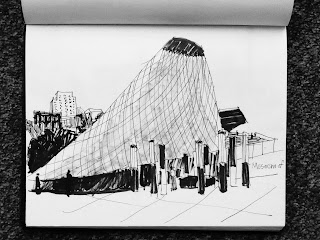Baghdad in the Mid-1800's
'On the ninth day the family of Bahá'u'lláh also moved to the Najibiyyih, and the twelfth day was appointed for departure. Thus the Festival of Ridvan comprises twelve days. Throughout the twelfth day, people poured into the garden for their final farewells. At last the mules were loaded, the kajavihs (howdahs) were settled on them, the ladies and children took their seats in the Kajavihs, and towards sunset the red roan stallion was brought out for Bahá'u'lláh to mount. All those whose narratives have come down to us state that seeing Bahá'u'lláh in the saddle, and about to depart, evoked from the vast crowd heart-rending, unbearable cries of distress. The call: 'Allah-u-Akbar' - 'God is the Greatest' - rang out time and again. People threw themselves in the path of His horse, and as Aqa Rida expresses it, 'it seemed as if that heavenly steed was passing over sanctified bodies and pure hearts'. On that day for the first time they witnessed Bahá'u'lláh's splendid horsemanship. During all those years in Baghdad, although horses were never unavailable, Aqa Rida states that Bahá'u'lláh had always chosen to ride a donkey. Another symbolic sign of the divine authority that He now visibly wielded was the change in His headgear, on the first day of the Festival of Ridvan - the day He left His house in Baghdad for the last time, to take His residence in the Najibiyyih prior to His departure for the capital of the Turkish Empire. It was then seen that He was wearing a taj (crown), finely embroidered. A number of these tall felt headgears have been preserved: red, green, yellow and and white, beautifully adorned with embroidery of the highest quality and skill'.
(H.M. Balyuzi, Baha'u'llah - The King of Glory, p. 174)





























